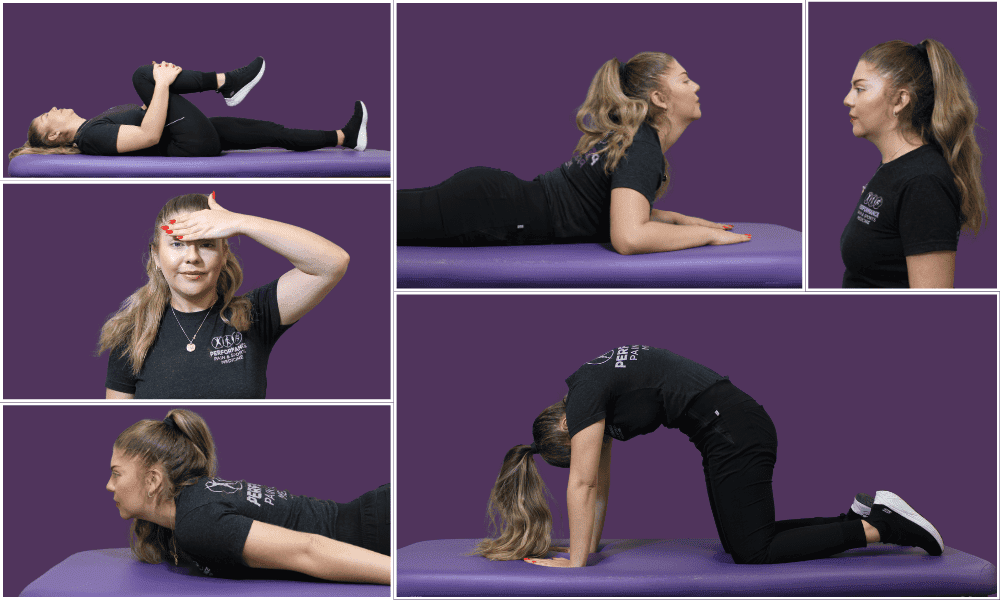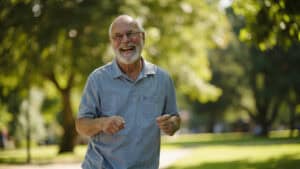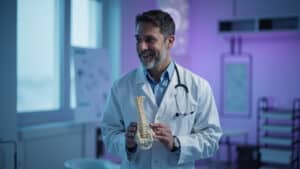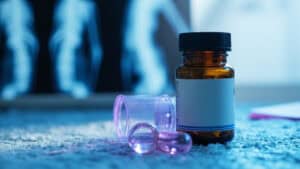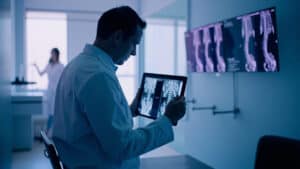Exercises and Stretches for Herniated Disc Relief: Expert Insights from Dr. Matthias Wiederholz
KEY TAKEAWAYS
- Expert Insights: Dr. Matthias Wiederholz provides expert strategies for herniated disc pain relief.
- Disc Anatomy: Understanding herniated discs is essential for effective pain management.
- Non-Surgical Methods: Rehabilitation exercises are emphasized to alleviate pain without surgery.
- Spinal Muscle Strengthening: Building a strong muscular support system around the spine is crucial for stability.
- Customized Exercise Plans: Tailored exercises for both cervical and lumbar spine regions address specific needs.
- Exercise Precautions: Awareness of movements that could aggravate a herniated disc is important for recovery.
- Long-Term Prevention: Maintenance exercises are key to preventing future disc injuries.
- Innovative Treatments: Dr. Wiederholz offers advanced non-surgical treatments for herniated discs.
- Global Accessibility: Access to Dr. Wiederholz’s expertise through in-person and virtual consultations.
- Sustained Spinal Health: A comprehensive approach ensures ongoing spinal function and quality of life.
Introduction to Herniated Disc Pain
Navigating the complexities of a herniated disc requires a nuanced approach to movement and rest. Dr. Matthias Wiederholz, MD, a luminary in pain management and a board-certified specialist, brings a wealth of expertise to the table.
At the helm of Performance Pain and Sports Medicine, Dr. Wiederholz is dedicated to guiding patients through personalized stretches for herniated disc and comprehensive spinal disc exercises.
His commitment to alleviating back pain extends beyond his practices in Houston and Lawrenceville, reaching patients globally through the innovative BICMD platform.
Understanding Your Herniated Disc
Anatomy of a Herniated Disc
The spine’s architecture is intricate, with discs acting as cushions between vertebrae. A herniated disc, a common source of back and limb pain, occurs when the disc’s nucleus pushes through its annulus, potentially irritating nearby nerves.
Symptoms and Diagnosis
A herniated disc can manifest as anything from acute pain to a subtle numbness. Dr. Wiederholz employs a thorough diagnostic process, often involving advanced imaging techniques, to pinpoint the source of discomfort.
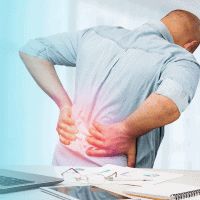
The Essential Role of Intervertebral Discs in Spinal Health
The spine’s structural integrity is heavily reliant on the health of the intervertebral discs. These discs act as the spine’s shock absorbers, distributing weight and mitigating stress across the vertebral column.
Comprising a tough outer layer and a gelatinous core, these discs provide the necessary cushioning to maintain spinal flexibility while preventing the vertebrae from grinding against each other.
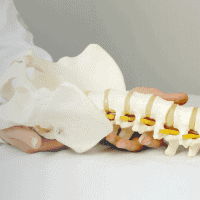
Comprehensive Approach to Herniated Disc Rehabilitation
When faced with a herniated disc, the primary objective is to alleviate pain and restore normal function without resorting to surgical intervention. A herniated disc, characterized by the protrusion of the disc’s nucleus through a tear in the annulus, can lead to debilitating pain and reduced mobility. The key to recovery lies in a carefully curated regimen of exercises and stretches that target the muscles supporting the spine.
Strengthening the Spinal Support System
Muscular fortification around the spine is crucial, especially since ligaments, which cannot be strengthened through exercise, may become lax following a loss in disc height. By focusing on the muscles, we create a supportive corset that enhances stability and reduces the burden on the compromised discs.
Enhancing Circulation and Healing
Exercise plays a pivotal role in promoting blood flow to the injured area, which is vital for healing. Additionally, it aids in the reduction of spinal stress and the correction of postural abnormalities that may contribute to pain and further injury.
Tailored Exercise Regimen for Cervical and Lumbar Spine
Cervical Spine Rehabilitation
#1: Isometric Neck Stabilization
Objective: To stabilize the neck without exacerbating the herniation.
Execution: Sit upright, press the forehead against a stationary hand, hold, and release.

#2: Neck Extension and Elevation
Objective: To gently mobilize the cervical spine.
Execution: Lie prone, gently lift the head to neutral, hold, and lower.

#3: Chin Tuck and Shoulder Retraction
Objective: To correct forward head posture and strengthen posterior neck muscles.
Execution: Perform chin tucks sitting or lying down and shoulder blade squeezes against a wall.

Lumbar Spine Rehabilitation
#4: Gentle Knee-to-Chest Stretch
Objective: To alleviate lower back tension.
Execution: Lie back, draw one knee to the chest, hold, and switch.

#5: Cat-Cow Mobilization
Objective: To enhance vertebral joint mobility.
Execution: Alternate between arching the back and sinking the abdomen while on all fours.

#6: Prone Spinal Extension
Objective: To encourage natural disc alignment.
Execution: Lie prone and use forearms to lift the upper body, maintaining hip contact with the ground.

Exercise Cautions and Contraindications
While exercise is beneficial, certain movements can exacerbate a herniated disc. Activities involving bending, lifting, or twisting (the “BLTs”) should be avoided. High-impact exercises, such as running, may also be detrimental. Instead, low-impact activities like swimming are recommended due to their minimal stress on the spine.
Long-Term Management and Prevention
Post-recovery, it is imperative to continue with a maintenance exercise program to prevent re-injury. This includes:
Core Stabilization: Exercises like the pelvic tilt strengthen the transversus abdominis, providing essential support to the spine.
Flexibility Training: Regular stretching of the hamstrings and hip flexors can prevent undue stress on the lumbar spine.
In summary, a strategic exercise and stretching program is paramount for the recovery and long-term management of a herniated disc. By adhering to a tailored regimen that prioritizes spinal health and stability, individuals can significantly improve their quality of life and mitigate the risk of future spinal issues.

FAQ Section
What stretches to do if a spinal disc shifted forward?
Dr. Wiederholz suggests gentle anterior pelvic tilts and supported bridge exercises to realign a forward-shifted disc, always advising that these be done under professional supervision.
Can exercise fix a slipped disc?
While exercise cannot “fix” a slipped disc in the traditional sense, Dr. Wiederholz underscores its role in managing symptoms and facilitating recovery, often reducing the need for invasive procedures.
What are the best spinal extension exercises for herniated disc?
Spinal extensions, when done correctly, can offer relief. Dr. Wiederholz recommends starting with gentle, supported movements, progressing only as comfort allows.
Cutting-Edge Non-Surgical Treatments for Herniated Discs
At the forefront of non-surgical intervention for herniated discs stands Dr. Matthias Wiederholz, whose expertise has been instrumental in advancing patient care.
Dr. Wiederholz’s proficiency in innovative treatments such as The Discseel® Procedure, Epidural Steroid Injections, and the Endoscopic Discectomy Procedure has set a new standard in the management of spinal conditions.

The Discseel® Procedure
Dr. Wiederholz utilizes The Discseel® Procedure to treat patients suffering from disc-related spinal conditions. This groundbreaking treatment involves the injection of a biologic material to seal and repair torn or damaged discs, offering a regenerative solution that has shown promising results in alleviating pain and restoring function.
Epidural Steroid Injections
With a deep understanding of pain management, Dr. Wiederholz administers Epidural Steroid Injections to deliver targeted relief. This minimally invasive treatment reduces inflammation and pain caused by herniated discs, providing patients with a non-surgical option to manage their symptoms effectively.
Endoscopic Discectomy Procedure
The Endoscopic Discectomy Procedure is another area where Dr. Wiederholz’s expertise shines. This minimally invasive surgery allows for the removal of herniated disc material, relieving nerve compression without the need for a traditional open surgery.
Conclusion
Dr. Matthias Wiederholz’s dedication to non-surgical excellence is a testament to his commitment to patient care.
His practice at Performance Pain and Sports Medicine, with accessible locations in Houston and Lawrenceville, as well as virtual medical advice via BICMD, ensures that comprehensive, state-of-the-art care is within reach for those suffering from herniated discs.
By integrating a personalized approach with cutting-edge treatments, Dr. Wiederholz not only provides immediate pain relief but also paves the way for sustainable spinal health.

